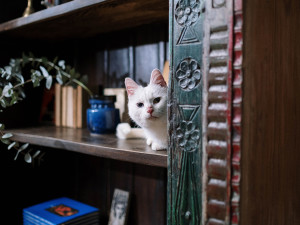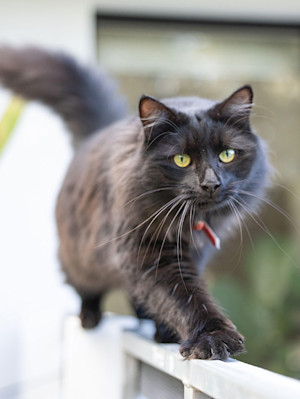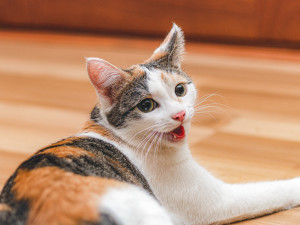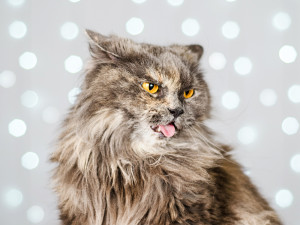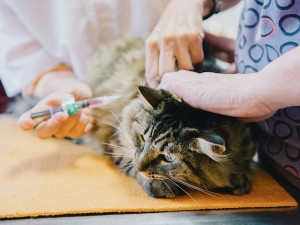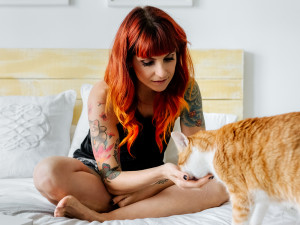How to Keep Your Cat Cool and Prevent Heat-Stroke
Summer safety is vital for cats
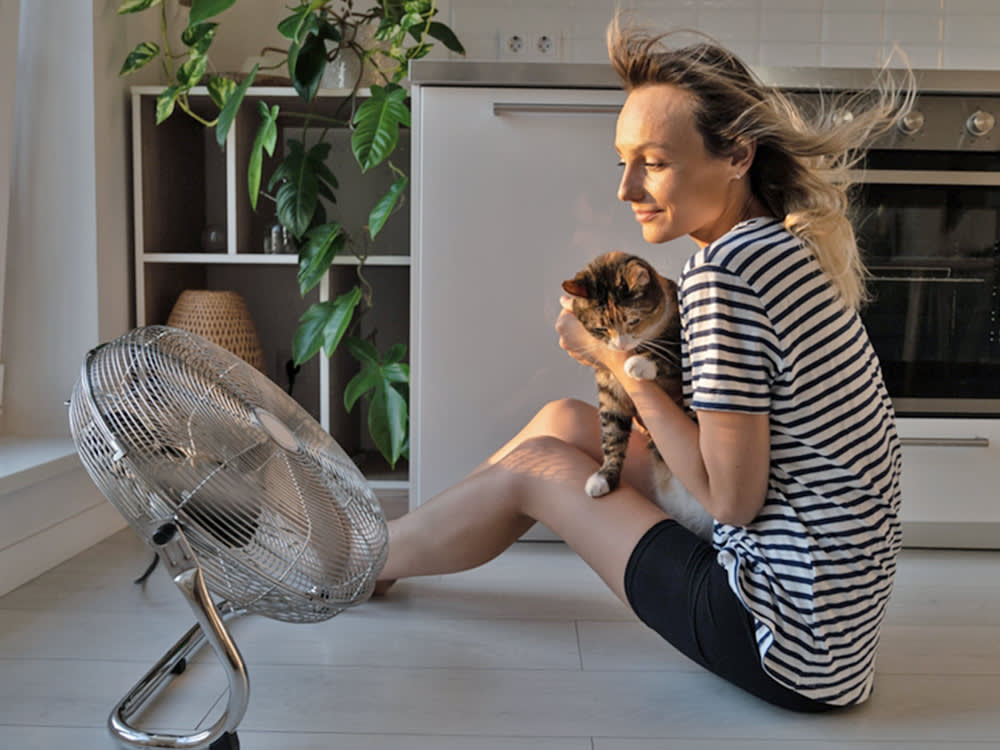
Share Article
As temperatures rise, ensuring your cat stays comfortable and safe becomes a top priority for any responsible pet parent. While our feline companions descended from desert-dwelling ancestors and naturally gravitate towards warm, sunny spots, there’s a fine line between blissful basking and dangerous overheating.
Understanding how to recognise the warning signs of heat-related illness and implementing effective cooling strategies can be the difference between a pleasant summer and a veterinary emergency.
How hot is too hot for cats?
Cats generally handle warm weather better than dogs, thanks to their evolutionary heritage, but they’re not invincible. The magic number to remember is 25C – this should be your upper comfort limit for most cats. Once temperatures climb beyond 27C, your feline friend enters the danger zone where heat-strokeopens in new tab becomes a genuine risk.
Understanding your cat’s heat tolerance
However, not all cats are created equal when it comes to heat tolerance. Certain cats face elevated risks and may struggle even at lower temperatures:
Senior cats (over seven years old) with slower metabolisms.
Kittens under six months with immature temperature regulation.
Flat-faced breeds such as Persians and Himalayans who struggle with efficient breathing.
Long-haired varieties such as Maine Coons and Ragdolls.
Overweight cats carrying extra insulation.
Cats with pre-existing respiratory or cardiac conditions.
Heat-stroke in cats: what you need to know
Heat-stroke is a critical medical emergency where your cat’s internal temperature regulation system fails. The potentially life-threatening conditionopens in new tab occurs when heat generation overwhelms the body’s natural cooling mechanisms, which can potentially cause irreversible damage to vital organs.
Unlike dogs, cats don’t rely heavily on panting for temperature control, making them particularly vulnerable to rapid overheating. Instead, they depend on behavioural adaptations such as seeking shade and reducing activity levels.
Recognising the warning signs
Early intervention is crucial, so familiarise yourself with these heat-stroke indicators:
Primary symptoms:
Excessive panting – unusual for cats, with an open mouth and protruding tongue.
Heavy drooling – particularly concerning in hot conditions.
Increased water consumption – significantly more than their usual intake.
Body temperature exceeding 40C.
Advanced symptoms requiring immediate veterinary attention:
Rapid or irregular heartbeat.
Bright red or dark gums and tongue.
Restlessness followed by lethargy.
Muscle tremors or twitching.
Unsteady gait or staggering.
Sweaty paw pads.
Reduced or absent urination.
Collapse or unconsciousness.
What to do if you think your cat has heat-stroke
If you suspect your cat has heat-stroke, contact your vet immediately. Initial emergency treatment at home should aim to normalise body temperature before you get to the vet.
Follow these steps while arranging immediate veterinary care:
Move them out of the heat – move your cat to the coolest available area.
Apply tepid water – use cool (not ice-cold) water on their fur, focusing on the head, neck, and paw pads.
Create airflow – use a fan to enhance evaporation and cooling.
Avoid ice – extreme cold can actually worsen the condition by causing blood vessels to constrict.
Transport immediately – even if symptoms appear to improve, professional assessment remains essential.
Even if your cat looks like they may be recovering or you just suspect they might have heat-stroke, they should still always be checked by a vet.
Ways to keep your cat cool and prevent heat-stroke
Cats are usually very smart about what they need to do to cool off in hot weather. They might seek out cold, tiled surfaces to lie on; groom themselves (after licking their fur, the saliva then evaporates and will cool them down, in exactly the same way sweating cools us down); drink more water to stay hydrated; and take more naps – cats know that they need to save their energy when the weather is hot so during the hottest part of the day you may find that your cat is snoozing in a cool spot in your home.
There are lots of ways you can lend a helping hand to ensure your cat stays cool and does not develop heat-stroke.
Avoid heat and provide shade
Keep your house as cool and well ventilated as possible. If you have the space, you can also create a dedicated ‘cool room’ for your cat where you have drawn the curtains and created ventilation with fans and an open window. Just make sure the window is secured with a screen or netting so your cat doesn’t head out into the heat.
Keep your cat inside – preferably in that aforementioned well-ventilated space rather than in a room that typically gets hot – during the hottest part of the day (between 11am–3pm) so they are not exposed to direct sunlight and they’re not making contact with hot pavement or any other areas where heat is reflected and there is no access to shade. If your cat does go outside in the cooler hours of the day, it’s important to ensure they still have access to a shady spot.
You should also make sure your cat stays out of greenhouses, conservatories, sheds, porches and cars in warm weather as these locations are likely to heat up more. Always check before you close hot rooms – if your cat is trapped with nowhere to cool down, it’s likely to result in a serious case of heat-stroke.
Keep them hydrated
Make sure your cat has plenty of fresh clean drinking water, both indoors and outdoors, at all times and that the water bowl is in a shady spot. Some cats prefer to drink from running water, so try offering them a drink from your tap or a water fountain to encourage them. You can also put ice cubes in their water bowl to keep it cooler.
Frozen treats
Ice lollies are a great way to keep your cat entertained and cool, just freeze some spring water from a can of tuna into an ice lolly mould. You can also put ice cubes on a hard floor for your cat to push around and play with (especially helpful if you have a bored kitty on your hands who can’t go outside because it’s too hot). This will help cool their paws, which is where cats absorb and lose heat.
Cooling devices
Cooling matsopens in new tab are a relatively cheap solution to help your cat stay cool. They are filled with a non-toxic gel that absorbs and dissipates your cat’s body heat. They don’t require electricity and can be recharged by allowing them to rest in a cool area.
Grooming
Grooming your cat’s excess fur can help them stay cool as fur traps heat. While your cat will do a lot of their grooming themselves, you can help by grooming them daily to remove dead hair, which will make them feel more comfortable during a heatwave. On particularly hot days, you can also consider stroking your pet with wet hands to provide relief from the heat.
Use sunscreen
Although fur is a great sun barrier, cats can still get sunburnt especially on areas such as the ears and nose. Cats that are hairless, such as Sphynx cats, or light in colour such as ginger or white cats, are especially at risk. Arm yourself with some cat sunscreenopens in new tab if your cat falls in to any of those categories and they’re going to be outside, even if it’s during cooler times of the day.
Support your cat’s natural cooling behaviours
Cats instinctively know how to manage heat, and supporting these natural behaviours can improve their comfort levels:
Surface seeking – provide access to cool tiles, stone floors, or shaded concrete.
Increased grooming – the evaporation of saliva mimics our sweating response.
Extended napping – respect their need for additional rest during hot periods.
Reduced activity – don’t encourage vigorous play during peak temperatures.
When to speak to a vet
Never hesitate to contact your veterinarian if you’re concerned about heat-related stress or illness. Even if symptoms seem to resolve, internal damage may have already occurred that requires a professional assessment.
Immediate veterinary attention is non-negotiable for:
Any suspected heat-stroke symptoms.
Persistent panting or breathing difficulties.
Extreme lethargy or behavioural changes.
Vomiting or diarrhoea in hot conditions.
Any collapse or loss of consciousness.
So while it may not be a hot girl summer for your feline, keeping your cat cool is extremely important for their health. But with a cool mat, an ice cube tray and knowledge of how to spot heat-stroke, you should be able to make the season a breeze for you and your kitty.
This information is not meant to be a substitute for veterinary care. Always follow the instructions provided by your vet.
Ro Elfberg
Ro is Kinship UK’s Senior Editor. She has previously written and copy-edited for British Vogue, Glamour and DICE. When she’s not being manipulated into dishing out Dreamies to Kobe the cat, she spends her free time trying to convince her snake, Butters, to wear a tiny hat.

Orla Pentelow
Orla Pentelow is Kinship UK’s Senior Editor. She has previously written for British Vogue, Bustle, Yahoo and The Telegraph. When not at her desk liking dog videos she’s out and about with her rescue pup, Luna, who works primarily as chief distractor.
Related articles
Why Is My Cat Hiding?
No, they’re not on the lam. Here are four reasons your cat might be MIA
![A fluffy black cat walking along the top of a fence.]()
Why Cats Are So Good At Obstacle Courses, According To Science
Walk this way...
![kitten lying on the floor breathing through his mouth]()
Is My Cat... Panting?
“Cats don’t pant to cool off like dogs do.” Unless your pet is catching their breath after doing the zoomies, Dr Gary Weitzman says panting could be cause for concern
![grey and white cat with tongue sticking out]()
Why Is Your Cat Vomiting Like They Partied All Night?
Here’s when you should worry if your cat is throwing up
![cat getting a vaccine at the vet]()
Yep, Kittens Need Vaccines (Even Indoor Ones)
A vet gets the facts straight
![Young modern woman with tattoos and orange hair sitting cross-legged on her bed with her cat]()
Does My Cat Really Need to See a Vet?
Cats can be hard to read. Especially when they’re sick. Or… not sick? We asked a veterinarian how to tell

